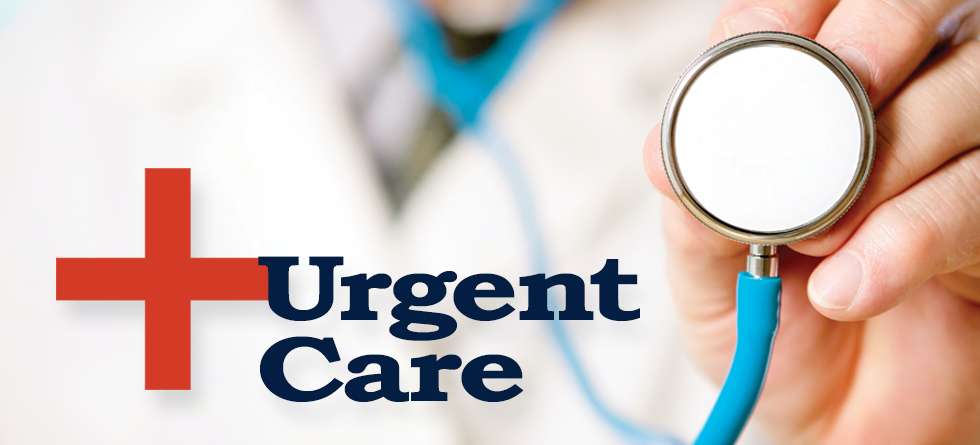The Relevance of Urgent Care Centers in Bridging the Gap Between Health Care and Emergency Situation Solutions
Immediate treatment centers have emerged as an important element of the healthcare landscape, efficiently addressing the critical demand for immediate medical interest without resorting to emergency solutions. The evolving role of immediate treatment centers increases important inquiries concerning their assimilation within the broader healthcare system and the implications for patient end results and source allotment.
Introduction of Urgent Treatment Centers
Urgent treatment centers have come to be a vital part of the health care distribution system, supplying easily accessible clinical solutions for non-life-threatening problems. These facilities typically run outside common workplace hours, offering people an alternative to emergency situation areas and medical care setups. Individuals looking for urgent care frequently existing with problems such as minor injuries, infections, or illnesses that need timely attention however do not pose a prompt threat to life or arm or leg.
Urgent treatment facilities are staffed by a series of healthcare professionals, including medical professionals, registered nurse specialists, and doctor assistants, who are furnished to identify and deal with different medical problems. They commonly feature diagnostic devices such as X-ray equipments and research laboratory solutions, allowing them to provide detailed care on-site.
The establishment of urgent treatment facilities has actually been affected by the raising need for prompt medical solutions in a fast-paced society, where clients might struggle to safeguard consultations with medical care suppliers. Consequently, these facilities intend to relieve blockage in emergency departments, enhancing general healthcare efficiency. In addition, urgent treatment centers often serve as a bridge between key treatment and emergency solutions, ensuring that people get suitable treatment tailored to their specific clinical needs.

Benefits of Urgent Care Provider
Accessing prompt clinical care is a considerable advantage of immediate treatment services. These facilities provide instant interest for non-life-threatening problems, efficiently minimizing delay times compared to typical emergency divisions. Individuals looking for take care of minor injuries, illnesses, or urgent wellness problems can acquire treatment without the long hold-ups often associated with health center brows through.
One more secret advantage is the extensive hours of procedure. Many immediate care facilities are open nights and weekends, accommodating patients that may not be able to visit their primary treatment provider during common workplace hours. This flexibility makes urgent treatment an accessible option for those with busy schedules or unexpected wellness concerns.
Moreover, urgent care facilities often supply a variety of services, including diagnostic testing, X-rays, and fundamental research laboratory services. This comprehensive approach enables quick medical diagnosis and treatment, enhancing patient complete satisfaction.
In addition, urgent treatment facilities are normally much more cost-effective than emergency situation spaces, making them an appealing alternative for people without insurance policy or those with high-deductible strategies. In general, immediate care services play a vital role in giving easily accessible, timely, and affordable medical treatment.
Contrast With Health Care
Commonly, individuals frequently evaluate their options between urgent care centers and medical care carriers when seeking clinical interest. Both serve vital functions in the healthcare system, yet they vary significantly in price, scope, and availability.
Health care carriers are usually the first factor of call for people, concentrating on long-lasting health monitoring, preventive treatment, and persistent condition administration. They supply continuity of care, promoting a patient-provider partnership that enables for thorough health evaluations and tailored click for more treatment strategies. Nonetheless, arranging a consultation can be time-consuming, often requiring days or weeks ahead of time.
On the other hand, immediate treatment facilities supply instant look after non-life-threatening problems that need punctual attention, such as small injuries or infections. These centers usually operate outside of typical office hours, accommodating people who may not be able to see their health care carrier throughout regular service times. Additionally, urgent treatment is typically much more affordable than emergency situation space check outs, making it an attractive option for those with restricted medical care gain access to.
Ultimately, while immediate care facilities and medical care service providers both add to person health and wellness, they deal with unique demands, making it essential for patients to identify which alternative finest aligns with their situations.
Emergency Situation Solutions Communication
The interaction between immediate care centers and emergency services is a vital element of the healthcare landscape, particularly when patients encounter circumstances that may intensify in severity. Urgent care facilities offer as a bridge between main treatment and emergency divisions, dealing with non-life-threatening problems that require prompt focus. This partnership improves individual end results and enhances resource allowance within the healthcare system.
When people present with immediate but not dangerous problems, urgent treatment facilities can effectively manage their needs, minimizing blockage in emergency clinic. When a person's problem goes beyond the scope of immediate care therapy, Facilities outfitted with diagnostic capacities can assist in prompt referrals to emergency situation solutions. This smooth interaction assists make certain that patients receive the appropriate level of care without unneeded delays.
Furthermore, reliable interaction in between immediate treatment service providers and emergency situation services is vital. Sharing patient info and therapy histories promotes coordinated treatment, decreasing the danger of repetitive examinations and procedures. As health care remains to progress, the dynamic connection in between immediate treatment facilities and emergency situation solutions will play a critical role in enhancing individual treatment performance, satisfaction, and total health end results within the community.
Future of Urgent Treatment Facilities
As medical care demands evolve, the future of urgent treatment centers is poised to come to be increasingly essential to the general medical community (Urgent Care). These facilities are most likely to increase their roles by incorporating sophisticated modern technologies, such as telemedicine, he said man-made intelligence, and digital health record integration. This will certainly improve person accessibility and improve care control in between urgent care, medical care, and emergency solutions
Furthermore, urgent treatment facilities are expected to expand their service offerings to include precautionary care and persistent illness administration. This change will certainly position them as crucial components in managing populace wellness, minimizing the concern on emergency divisions, and resolving spaces in medical care accessibility.
The growing fad of value-based treatment read what he said will better accelerate the makeover of immediate treatment centers, triggering them to concentrate on person results and complete satisfaction. Facilities may additionally take on joint technique versions, functioning very closely with professionals and medical care suppliers to make sure detailed client management.
Verdict
To conclude, urgent treatment centers offer an essential function in the medical care system by supplying instant accessibility to treatment for non-life-threatening conditions, successfully minimizing pressure on emergency services. Their extended hours and diverse range of services enhance patient ease and satisfaction, while also making sure ideal treatment delivery. As health care needs continue to evolve, the function of immediate care centers will likely become progressively substantial, additional connecting the void between primary treatment and emergency solutions.
The facility of immediate treatment facilities has been affected by the increasing demand for prompt medical solutions in a fast-paced society, where patients may have a hard time to safeguard appointments with main care suppliers. Furthermore, urgent care facilities often serve as a bridge between key treatment and emergency situation services, guaranteeing that clients get proper treatment customized to their certain clinical requirements.
Numerous urgent care facilities are open nights and weekend breaks, suiting people that might not be able to see their primary care supplier during common office hours (Urgent Care). As healthcare continues to advance, the vibrant partnership in between immediate treatment facilities and emergency situation services will play a pivotal role in boosting person treatment efficiency, fulfillment, and overall health and wellness results within the community
